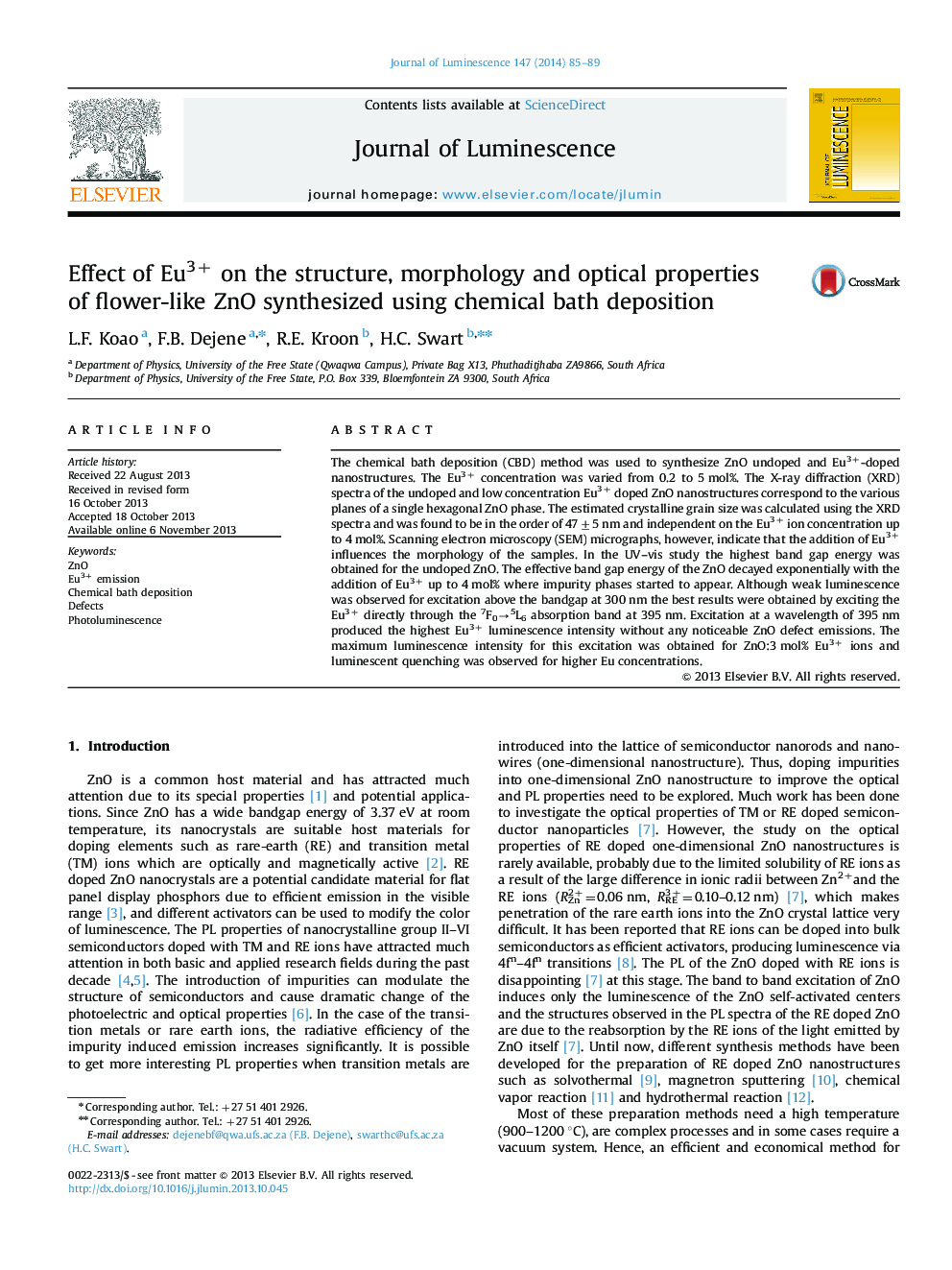| Article ID | Journal | Published Year | Pages | File Type |
|---|---|---|---|---|
| 5400029 | Journal of Luminescence | 2014 | 5 Pages |
Abstract
The chemical bath deposition (CBD) method was used to synthesize ZnO undoped and Eu3+-doped nanostructures. The Eu3+ concentration was varied from 0.2 to 5 mol%. The X-ray diffraction (XRD) spectra of the undoped and low concentration Eu3+ doped ZnO nanostructures correspond to the various planes of a single hexagonal ZnO phase. The estimated crystalline grain size was calculated using the XRD spectra and was found to be in the order of 47±5 nm and independent on the Eu3+ ion concentration up to 4 mol%. Scanning electron microscopy (SEM) micrographs, however, indicate that the addition of Eu3+ influences the morphology of the samples. In the UV-vis study the highest band gap energy was obtained for the undoped ZnO. The effective band gap energy of the ZnO decayed exponentially with the addition of Eu3+ up to 4 mol% where impurity phases started to appear. Although weak luminescence was observed for excitation above the bandgap at 300 nm the best results were obtained by exciting the Eu3+ directly through the 7F0â5L6 absorption band at 395 nm. Excitation at a wavelength of 395 nm produced the highest Eu3+ luminescence intensity without any noticeable ZnO defect emissions. The maximum luminescence intensity for this excitation was obtained for ZnO:3 mol% Eu3+ ions and luminescent quenching was observed for higher Eu concentrations.
Related Topics
Physical Sciences and Engineering
Chemistry
Physical and Theoretical Chemistry
Authors
L.F. Koao, F.B. Dejene, R.E. Kroon, H.C. Swart,
